Disclosure: Meeple Mountain received a free copy of this product in exchange for an honest, unbiased review. This review is not intended to be an endorsement.
I adore the 2014 bag-building classic Orléans so much that I didn’t feel right “reviewing” it, at least in the traditional sense. My mind has been made up for years, so I filed an article in our Games We Love series.
So, let’s clear the decks on that first: Orléans is amazing, and I won’t accept any argument to the contrary. But I love the base game so much that I really haven’t played the expansions, despite the fact that I bought both the base game and all the available expansions in 2020 through a deal with GameNerdz: $42 for the base game and the three expansions available at the time. That was probably worth at least $125, if not more.
The deal was really good because GameNerdz had a stock of Orléans content published by Tasty Minstrel Games (TMG). TMG lost the license to publish Orléans, so GameNerdz had to push that stock out. For those of us without a life on a Black Friday, this news was solid gold.
Then the box arrived, and I never bothered playing the expansions. Our partners at Capstone Games (the current owner of the rights to publish Orléans products in the US) provided a review copy of the 2023 expansion Orléans: The Plague, so I thought this was a great opportunity to review all the expansion content at once.
My rating below summarizes my thoughts on all the expansions combined, based on nine fresh plays of the game with various expansions. Don’t worry—it was not a chore to play my second-favorite Euro nine more times. (My favorite Euro ever? Grand Austria Hotel, with the Let’s Waltz! expansions.)
If you are unfamiliar with how Orléans works, feel free to read my Games We Love article, linked above. Now let’s talk through the four main expansions, starting with the releases in chronological order (using dates provided by BGG).
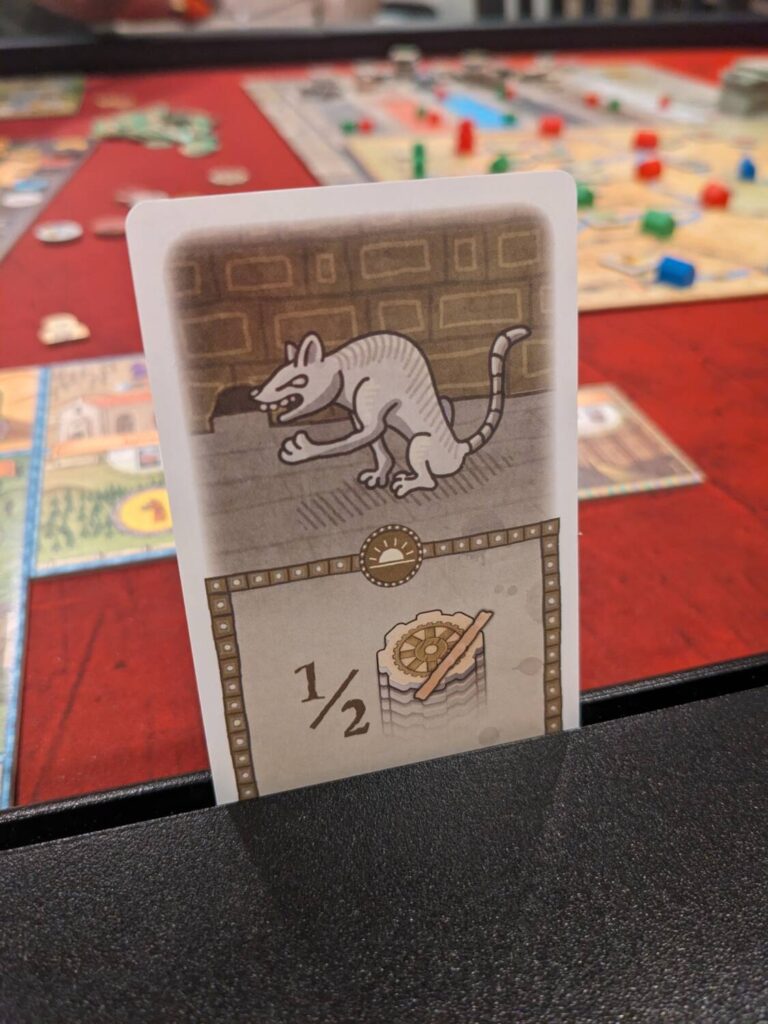
Orléans: Invasion (2015)
I played four of the six modules included in this set, including…
“Prosperity”
Prosperity adds a single new element to the base game: the Carpenter. The Carpenter meeple, which is controlled by all players via a new Place tile next to each player’s personal board, slowly walks around the map and can drop trading houses on goods tiles. These trading houses (from the starting supply of 10 that each player usually drops using the Guildhall action) can only be placed by the active player holding a Structure card that matches the city attached to the place that the Carpenter is moving from.
If that happens, the player reveals their card to the table, places a trading house on the goods tile, and will score end-game points if they also pay the cost on the card in coins, goods, and/or matching Followers pictured on the card before the end of the game. Players can draw and score additional cards by taking the Scriptorium action, which includes an additional option to draw more Structure cards in this module.
A couple other minor changes to the base game, one of which was ultimately a major change in my play: goods tiles start the game face-DOWN on the map, instead of face-up like normal. That means you don’t really know what your merchant is grabbing until you walk over a goods token.
The other change is one that takes place in the majority of the modules with Invasion—the Events are predetermined, unlike the base game’s 18 hour glass tiles that slowly reveal the base game’s 18 Events (across six types, such as Plague, Harvest, Pilgrimage, etc.). That means you will know the minor rules changes for each of Prosperity’s 16 rounds (two less than the base game) in advance, allowing for a nice amount of planning.
Prosperity was less interesting than I hoped. I got a little lucky—I played Prosperity with only two players. That meant moving the Carpenter in the direction you really wanted was actually possible here, because in a four- or five-player game, I can only imagine the Carpenter movement to be complete chaos. How do you move that figure from one corner of the map to the other if four other players are also moving that character in the direction that achieves their personal goal?
In some ways, the Carpenter mechanic has a taste of pick-up-and-deliver, by having the meeple move to a certain place before requiring a player to spend some of their resources to score points. I don’t believe Orléans needed that.
The face-down goods tiles set my opponent on fire during our game, because he kept turning tiles over to discover wheat, the game’s least-valuable resource. (Had it all been brocade, the game’s most valuable resource, I’m sure he would have felt differently.) The randomness here cannot be mitigated unless a player picks up the new-to-this-expansion Black Market Place tile, which allows a player to trade two matching resources for any single other resource. Even then, you’d rather discover wool or brocade than wheat while your merchant is strolling around the map.
Prosperity felt like an interesting idea when I read the rules, but didn’t excite me in execution. Moving the Carpenter, only to have an opponent move the Carpenter in the direction opposite to my goals, felt like a waste so I found myself focusing on doing actions that were under my direct control. And those actions were basically just like playing the base game.
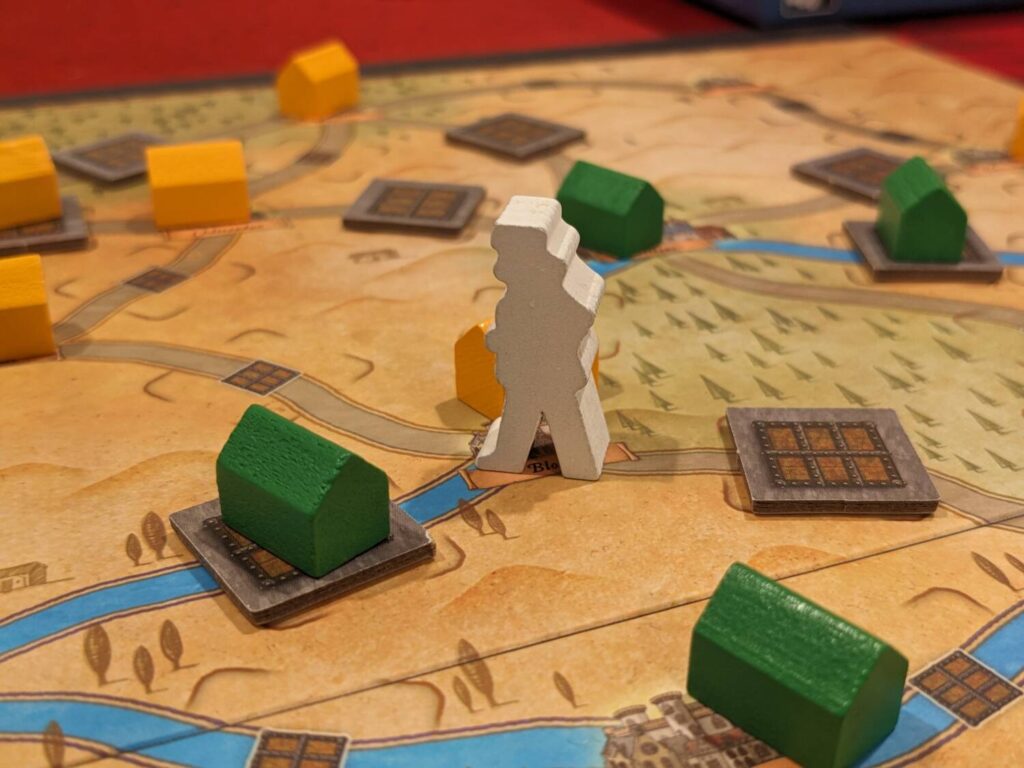
“The Dignitary”
The Dignitary is a solo module featuring its own scenario board and a Place tile called the Stage Coach, new to this expansion. (Like other new Place tiles, the Stage Coach can be used in any game of Orléans.)
The setup is straightforward—claim eight Citizen tokens by the end of your 16th turn. Six of these Citizens are placed on towns on the base game map, then the remaining seven Citizens can be placed at the player’s discretion in any other normal spots where they would reside (such as the tracks for the Knights and Boatmen followers, the development track, etc.).
Like Prosperity, The Dignitary has 16 predetermined events, including some of the classic events as well as new ones such as events where you cannot claim certain Follower types or additional taxes are levied on each player.
The Dignitary was a puzzle that basically played just like the base game, with the Stage Coach providing a nice option—using a Knight and three coins to move the merchant to the next adjacent space (via land or sea, a nice flex on the base game rules of Ship versus Wagon). This allowed me to scoop up Citizen tiles in a way that differed slightly from the base game, while staying away from changing too many core game rules.
Of course, this also means that The Dignitary is essentially the same as playing base Orléans solo. I’m not sure I would buy Invasion to only play a similar version of the base game without any extras, but since it is here, it serves as a nice warm-up if you are playing Orléans with other expansions just afterwards.
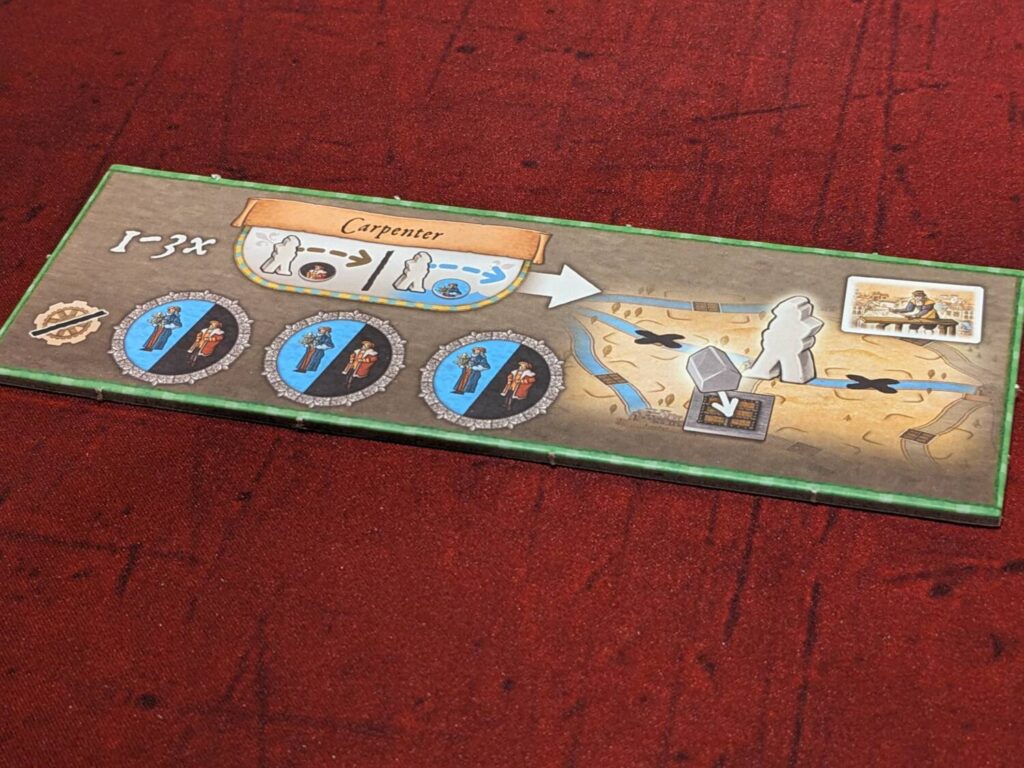
“Capital Vierzon”
Another solo module, Capital Vierzon (and no, it’s not Capital Verizon!) brings a level of difficulty to the Orléans system that just didn’t land for me.
Here, events are again predetermined as the player gets just 14 turns to achieve five distinct goals:
- Pay 10 coins to the bank by the end of round 9;
- Pay 25 coins to the bank by the end of the game;
- Build a trading station in Loches (one of the map cities);
- Deliver 12 VP worth of goods to Vierzon (depending on your random goods distribution during setup, harder than you’d think)
- End the game with at least 28 VP worth of development points (using the base game formula of adding Citizens to trading houses, then multiplying that sum by your level on the development track). Assuming you are at level four on the track—doable within 14 turns—that means you’d need to have a combination of at least seven Citizens and/or trading houses.
This one was a challenge. I got four of the five goals completed…everything except getting goods to Vierzon. But it provided a healthy amount of fear as I tried to math out perfect turns to achieve all five goals by the end. The Citizen tiles in Capital Vierzon are only in seven spots—the five from the base game on the tracks, plus two more on the scenario-specific deeds board.
Capital Vierzon doesn’t introduce anything else new, and it only plays solo. This is another one I would not consider playing again, if only because I’m not buying all this stuff to play the game solo. But this provides even more options for those who don’t like their Euros with any other human beings nearby!
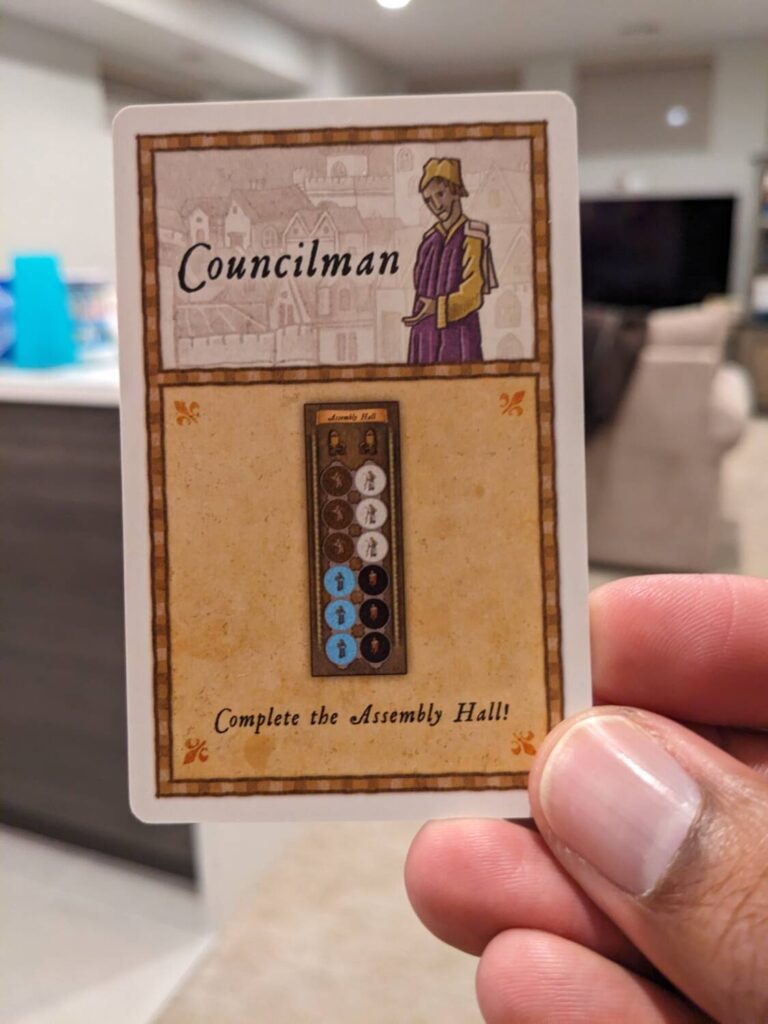
“Invasion”
The Invasion module uses its own Beneficial Deeds board, this time a board split into two halves that tracks a variety of tasks that all players must collectively defeat (or maybe defend against?) in order to win by the end of the sixteenth round.
All the tasks are straightforward: slowly get 50 coins into a treasury, put a certain number of knights on the town’s walls, etc. You have to take actions to get Followers, coins, and goods to the castle, so you are still playing Orléans, but then you also have to factor in a somewhat long list of other things too.
Each player also has a personal goal, which usually forces cooperation amongst the players. Special actions available only in Invasion—thanks to a new Place tile for each player, with three actions specific to this expansion module—give players the chance to essentially trade resources or simply gift goods, money and/or Followers to another player.
I like, but don’t love, cooperative games, so it was nice to try Orléans in a co-op format. Invasion feels like the module for players who have lapped the base game and feel like they need an exceptional challenge to work through. It was hard, and we decided on turn 14 that there was no way we were going to beat this module (we had four players for my play of this module).
The events are brutal. The personal challenges, on their own, aren’t too bad, but when balanced with all the other things players have to address to contribute their share to the Invasion boards, this module felt like a bridge too far.
Luckily, Invasion is not hard to teach nor to set up. It’s just co-op Orléans, with a boost to the difficulty level. I’m keeping this with my set of expansions, but I don’t think I’m going to come back to it.
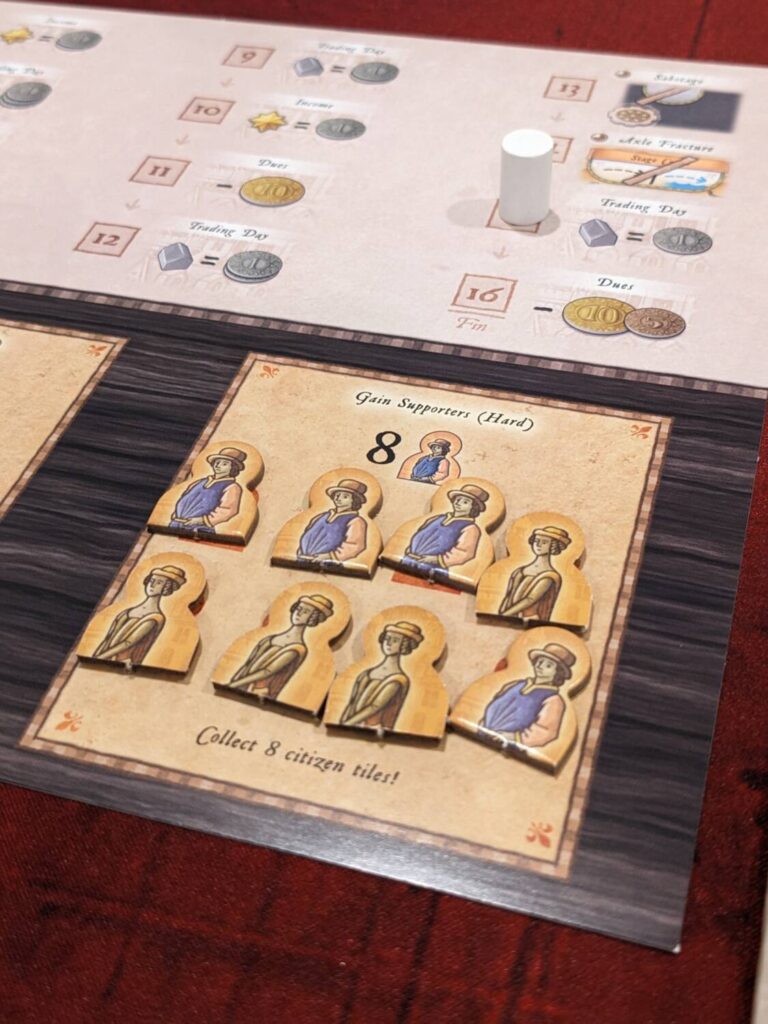
Orléans: Trade & Intrigue (2016)
Trade & Intrigue is also known in some of my circles as “the only way I will play Orléans.” I have never felt that way, but some people (including my buddy Alec, who also enjoys Orléans and joined me for the plays of Voidfall last year) insist that the Beneficial Deeds board in this expansion is the only way to fly.
I played one game of Trade & Intrigue years ago and, after a fresh play to prepare this review, I still feel the same way: it’s good, and it is the best of the Orléans expansions, but I don’t need it to play the base game. In part, that’s because the Intrigue board breaks the “Euro-ness” of the base game by offering direct negative interaction between players.
If the Intrigue board is swapped in as that play’s Beneficial Deeds board (you can only use one of these in each game), you can do some really nasty things to opponents, like burn another player’s trading post to the ground, teleport their Merchant back to Orléans, swap out your terrible goods for a nicer one from an opponent, or rob an opponent of valuable cash. In a game that is positively delightful at times, the Intrigue board flips that idea on its head.
And Euro players are infamous for avoiding games where people can mess with their strategic plans. Guess how many people raised their hands asking to use the Intrigue board during my most recent play? That would be zero.
So, the Intrigue board isn’t even a thing I can get to the table. Luckily, the rest of the box is great.
The Hour Glass tiles (events) here are great. The Orders cards are simple to implement and give players who happen to be standing in certain locations a chance to fulfill public order cards by turning in goods for an upgraded amount of points. The other Beneficial Deeds board included with this expansion is an upgrade over the base game’s board, particularly in the bonuses that are awarded by certain deeds. Getting new Place tiles, better Development track bumps, and even Citizen tiles make burying Followers more attractive with Trade & Intrigue than the base game.
Many of my friends believe Trade & Intrigue is essential, so I’m sure it will come out again and again.

Orléans: 5th Player Box (2017)
The Tasty Minstrel Games edition of Orléans only played 2-4 players out of the box. With this expansion, the color black was introduced into the realm of player choices, extra bits were included to scale up the player count—extra Followers, extra cash, etc.—and a solo module titled “The Trip to Tours” was bundled into this very thin box.
Like Invasion, I only picked up 5th Player Box module because it came with the GameNerdz deal. To this day, I have still never played Orléans at five players, but I like having the option. (If anything, more players use the black pieces than one or two of the base game’s basic four colors of blue, red, yellow and green.)
I played The Trip to Tours exactly once. I just don’t think Orléans is a solo game; any player count higher than one is a win. I like the race for track Citizen tokens. I like the race on the main map to establish trading houses. The solo challenges presented in both Invasion and here with The Trip to Tours are a desperation play—maybe I’ll jump if I haven’t played Orléans in X months but I just wanna fish around in my red felt bag for tokens to complete minor challenges.
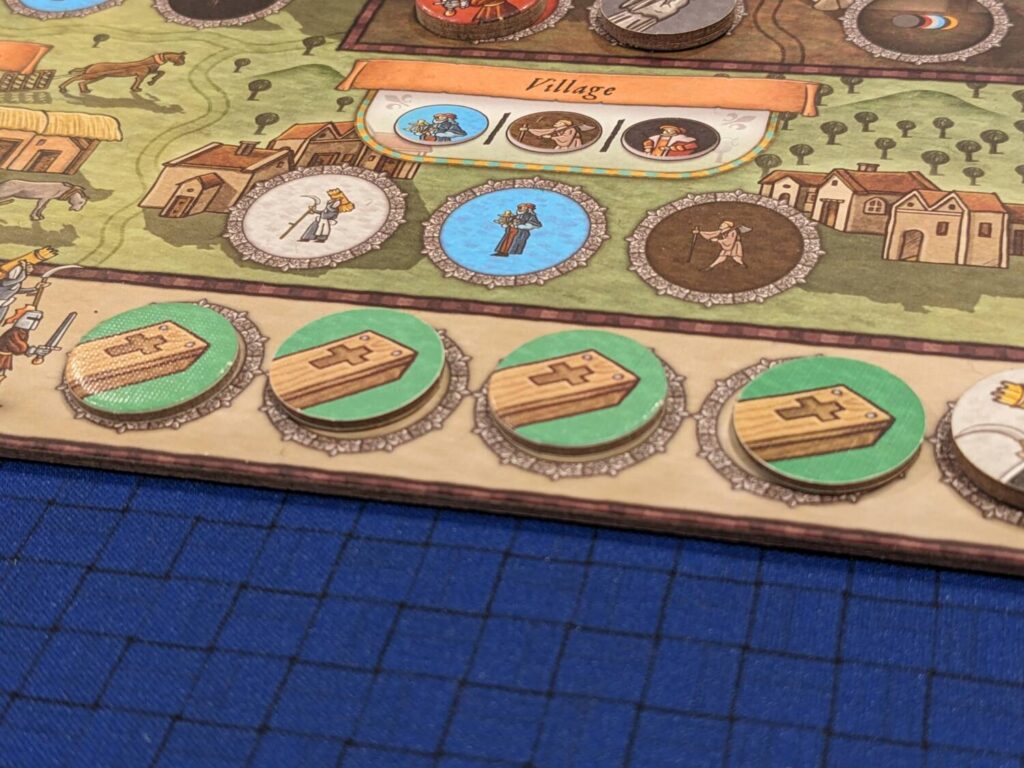
Orléans: The Plague (2023)
Capstone was kind enough to provide a review copy of The Plague, the newest expansion in the series.
This time around, you’ve got a small assortment of things to further enhance the base Orléans experience: three new Place tiles, new events (Hour Glass Tiles), an Infirmary board for each player, and a new Beneficial Deeds board that replaces the one used in the base game. Three cards are used from a 15-card “Plague” deck (not to be confused with the Plague event from the base game) to alter the rules and set-up restrictions for a particular game, such as a smaller set of trading houses for each player or a small cost added to certain actions.
The big additions in The Plague are Corpse tokens and the Plague Doctor. The Doctor is easy—after the first round, each player unlocks a cool-looking purple wooden meeple that can be used as any Follower in the game, even monks, to take actions. This is crucial because of the role Corpse tokens play in your bag with this expansion.
Almost every round, the Hour Glass tiles force players to add one or two Corpse tokens to their bag before drawing Followers in the next round. These Corpses are essentially blanks in a firearm. When a player draws Followers equal to their limit on the Knight track, any Corpses drawn get added to a player’s Market, blocking the ability to both use another Follower that round, and taking up space in the area where drawn Followers would go in future rounds.
One player referred to this addition as a fundamental change to gameplay, and I agree. Now, Orléans can be played as a sort-of deckbuilder, with filler “cards” (Corpse tokens) getting in the way of your juicy stuff the way games like Dominion or Clank! play. Getting rid of Corpse tokens isn’t easy, but it is possible—if you get too many in your Market, you can choose to wipe the Market but these tokens just go back in your bag, raising the chance that they will be drawn again.
Another way to clear your Corpses—Indulgence cards. These provide minor mission-driven objectives for a player to accomplish. Once a task on an Indulgence card is completed, the card is revealed to other players (a free action) and any Corpse tokens in that player’s Market get returned to the supply (and not your bag). In addition, each Indulgence card scores points at the end of play. Getting more Indulgence cards is simple, and you’ll need a few to keep the Market clear of the dead bodies represented by Corpse tokens.

I love the Plague Doctor idea, mainly because it is badly needed in a game where it sometimes feels like you are not drawing the right Followers, even if you’ve loaded your bag with the ones you need to trigger the actions you most want to focus on. But it is doubly important in The Plague because Corpse tokens eventually muck up your Market area to the point where you might not be able to take more than a single action on your turn.
Some of the events are similar to ones in other expansions, and most of them are negative. The ones that are not terrible end up being pretty sweet, including Retraining, which lets a player spend a good and move up on the Development track a number of spaces equal to the value of the good. (This event also appears in Trade and Intrigue.)
Rat Infestation is administered just like Plague in the base game, but here, you draw five tokens instead of one, and kill off any non-starter Follower token. I always hate when I draw a monk during the Plague event in the base game and have to throw that valuable Follower back to the board, so Rat Infestation mitigates that problem in a nice way.
The new Place tiles in The Plague? Meh. The best of the three is Medicinal Spring, which allows a player to use their Plague Doctor and any other Follower token to go up one space on that Follower’s track, then the Follower is returned to the supply. This is a sneaky way to boost yourself twice on the same track on the same turn. You could get a Knight and burn a pre-existing Knight token from your Followers to go up a second time on the Knight track, which might net you the Citizen token.
I like the changes offered here, and this expansion is more interesting than Invasion. But The Plague makes Orléans a little too swingy.
The Corpse tokens really destroy the ability to take a great turn at times, and some players will draw more Corpse tokens than other Followers from turn to turn. Because clearing the Corpse tokens can be challenging when a player does not have easy ways to complete their Indulgence cards, that can tilt the balance towards a player hindered by fewer issues.
When everyone is drawing Corpse tokens in equal portions, that can be fun to watch as everyone complains about how few actions they can take thanks to a poor Corpse draw. (Corpse tokens also hurt end-game scores, with each counting as one negative point. In one of my plays, these tokens cost me 10 points!!) But when Plague tokens hit one or two players early while others continue to take normal turns, that can put people at a disadvantage that can be hard to overcome.
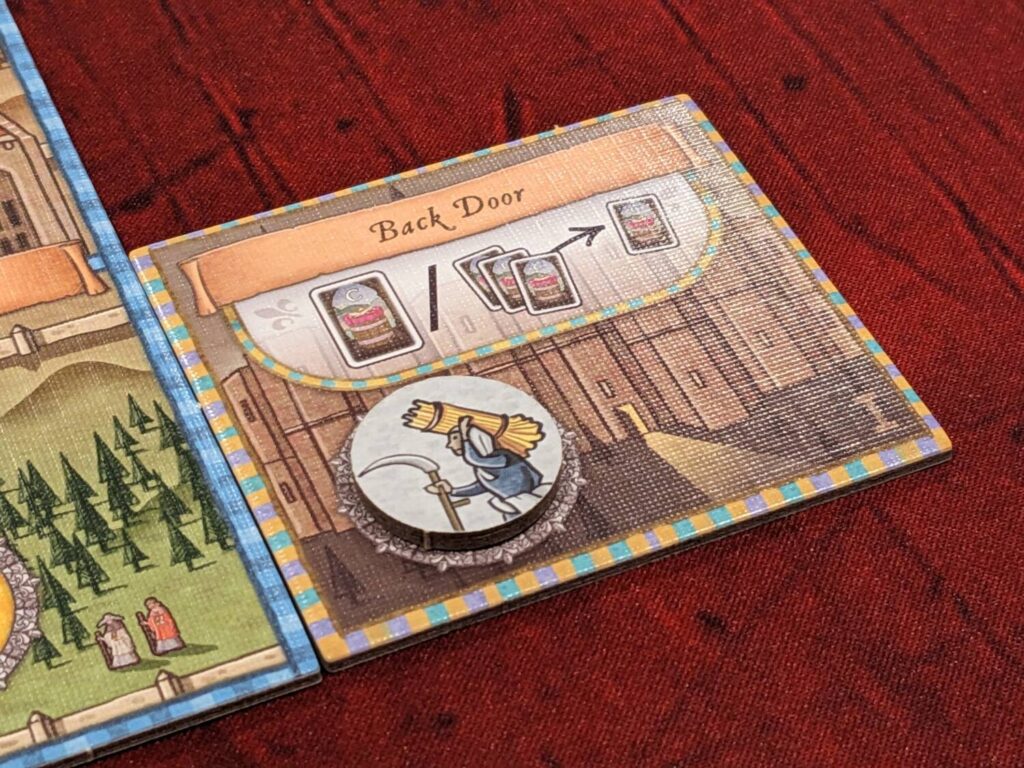
You’ve Got Choices
Remember, I think the Orléans base game is perfect. If no other expansions had been released, I’d still own a copy of the base game and be very happy to whip it out once or twice a year.
Everyone in my strategy group believes that Trade & Intrigue is a must when playing the base game. I see why, particularly because the benefits that come with that expansion’s Beneficial Deeds board can serve as very handsome combo bonuses in the hands of experienced players. With new Beneficial Deeds boards in every expansion, you have so many choices.
These expansions, particularly the Invasion module as well as everything in The Plague, feel very well suited for the Orléans superfan (particularly a superfan who is also a gifted Orléans player). I think The Plague is my favorite of these because it changes the fundamental gameplay enough to provide a nice challenge without being overwhelming. It also changed the way I think about turns—in The Plague, players were usually placing Followers on actions to complete them later, particularly on turns where the Market was filling up with Corpse tokens fast.
I almost never like to commit these workers to actions until I’m sure I can take those actions on my next turn. With The Plague, I found myself focused on technology tiles to ensure I could take more efficient actions, while also dropping, say, a Farmer on an action like Village (especially when pairing this with the Plague Doctor, so I would only need one additional matching Follower type along with that Farmer I placed earlier).
Even though I have all this stuff, I can see myself coming back to Orléans for my annual plays using only the base game content. Even the fifth player module is a tricky one to guarantee its inclusion. At five players, the main map gets crowded and makes it hard to beat the rest of the table at the trading house game that can score a bunch of end-game points.
The base game is perfect. As much as I’ve enjoyed the expansions, perfect is probably going to be enough for me!


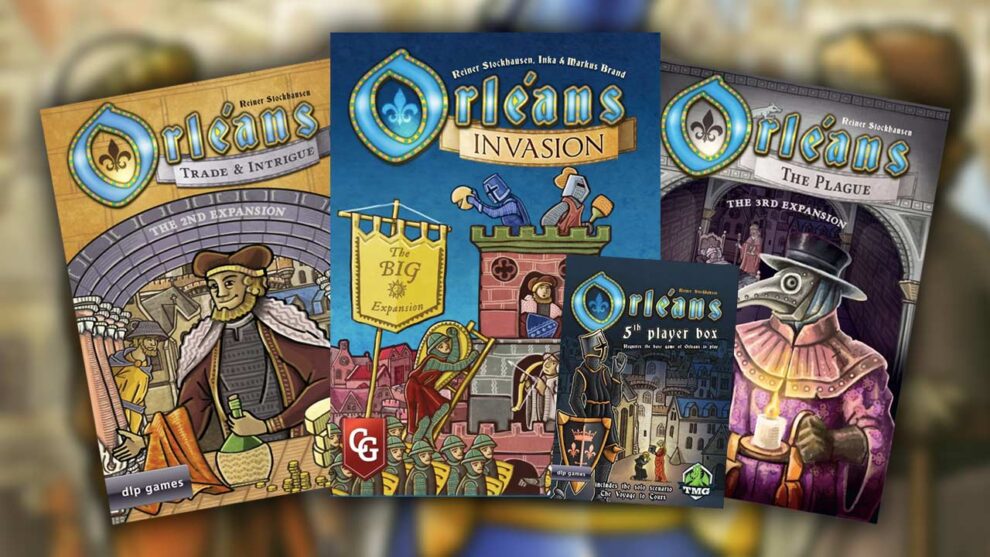

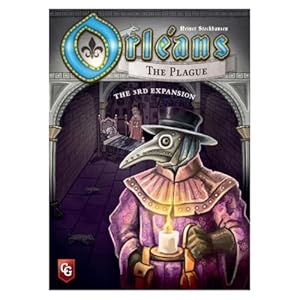


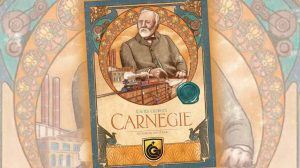





Thanks for this! Always been curious about whether to pick the full complement up. Ultimately I don’t think I will as I’d be overwhelmed by all the components and additions.
We do have Invasion though, and a slightly different take: the cooperative mode takes the game from a 9 to a perfect 10, for us. The only real ‘downside’ to the base game from our perspective was how solitary and ‘heads down’ it is. The cooperative mode forces you to engage with the other players and look at the puzzle together in a way that just elevates the experience. The set up is a bear even with an organiser but totally worth it. I particularly love that it adds the ability to send workers to your allies’ bags to pull off clever feats and complete achievements, making the composition of your bag that much more interesting.